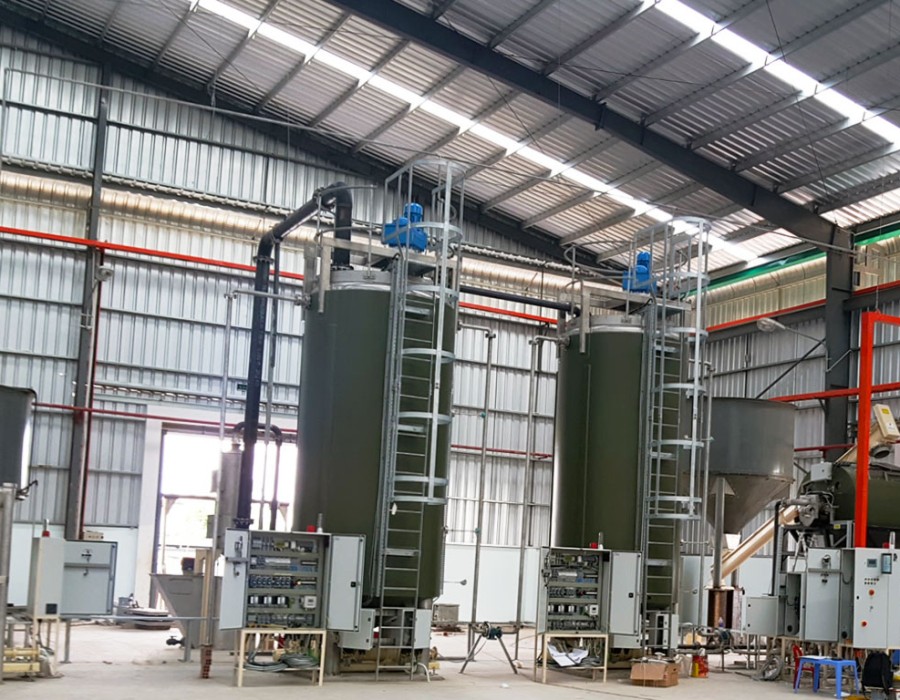As concerns about environmental degradation and resource depletion grow, one of the most crucial components of sustainable waste management is the effective treatment of organic waste. Organic waste, which includes food scraps, yard trimmings, agricultural residues, and biodegradable materials, represents a significant portion of the global waste stream. An organic waste treatment plant is essential for managing this waste, reducing its environmental impact, and converting it into valuable resources.
What Is Organic Waste?
Organic waste primarily consists of materials that originate from living organisms, including plants, animals, and food. This type of waste is abundant in both urban and rural areas. In cities, organic waste largely comes from household food waste and landscaping debris. In agricultural regions, crop residues, manure, and other organic by-products make up a significant proportion of waste. If left untreated, organic waste can contribute to a variety of environmental problems, including the emission of greenhouse gases such as methane and the contamination of soil and water sources.
The Role of Organic Waste Treatment Plants
An organic waste treatment plant is a facility designed to process and recycle organic materials into valuable by-products. These plants play a vital role in reducing landfill waste, decreasing pollution, and supporting a circular economy by transforming organic matter into compost, biogas, or other renewable resources.
Treatment Processes
There are several methods used in organic waste treatment plants, each designed to extract maximum value from the waste while minimizing environmental harm. Some of the most common methods include:
Composting: Composting is a natural process that involves the decomposition of organic waste by microorganisms under controlled conditions. Organic matter, such as food scraps and yard clippings, is broken down over time to produce compost – a nutrient-rich soil conditioner. Composting helps recycle nutrients back into the soil, improving soil structure and fertility.
Anaerobic Digestion: Anaerobic digestion is another key method of organic waste treatment, particularly for wet organic waste like food scraps and agricultural residues. In this process, microorganisms break down organic matter in the absence of oxygen, producing biogas and digestate. Biogas, a mixture of methane and carbon dioxide, can be used as a renewable energy source for heating, electricity generation, or fuel for vehicles. Digestate, the solid by-product, can be used as fertilizer.
Vermicomposting: Vermicomposting is a method of organic waste processing that involves the use of earthworms to break down organic matter into rich compost. This method is highly efficient and effective, particularly for smaller-scale organic waste treatment plants. The worms consume the organic waste and excrete nutrient-rich castings, which serve as excellent soil amendments.
Environmental and Economic Benefits
Organic waste treatment plants offer a range of environmental and economic benefits, making them an essential part of sustainable waste management.
Reduction in Landfill Waste: Organic waste treatment plants help reduce the volume of waste sent to landfills, extending the lifespan of these sites and reducing the production of harmful methane gas, a potent greenhouse gas.
Energy Production: Anaerobic digestion plants generate biogas, which can be used as a source of renewable energy. This reduces reliance on fossil fuels and helps reduce greenhouse gas emissions.
Soil Enrichment: By converting organic waste into compost, treatment plants produce a valuable product that improves soil health and reduces the need for chemical fertilizers. This supports sustainable agriculture and enhances food security.
Job Creation: The operation of organic waste treatment plants also creates job opportunities in the green economy, from plant operations and maintenance to research and development in the field of sustainable waste management.
Challenges
Despite the benefits, Organic Waste Treatment face several challenges. These include the high costs associated with establishing and operating these facilities, logistical challenges in collecting and transporting organic waste, and the need for public education and participation to ensure proper waste segregation.
The development and expansion of organic waste treatment plants are crucial for the future of sustainable waste management. By converting organic waste into valuable resources such as compost, biogas, and fertilizers, these plants help reduce environmental harm, mitigate climate change, and promote a circular economy. Investing in these technologies and encouraging public participation in waste separation will lead to a more sustainable and resilient future for all.





Comments